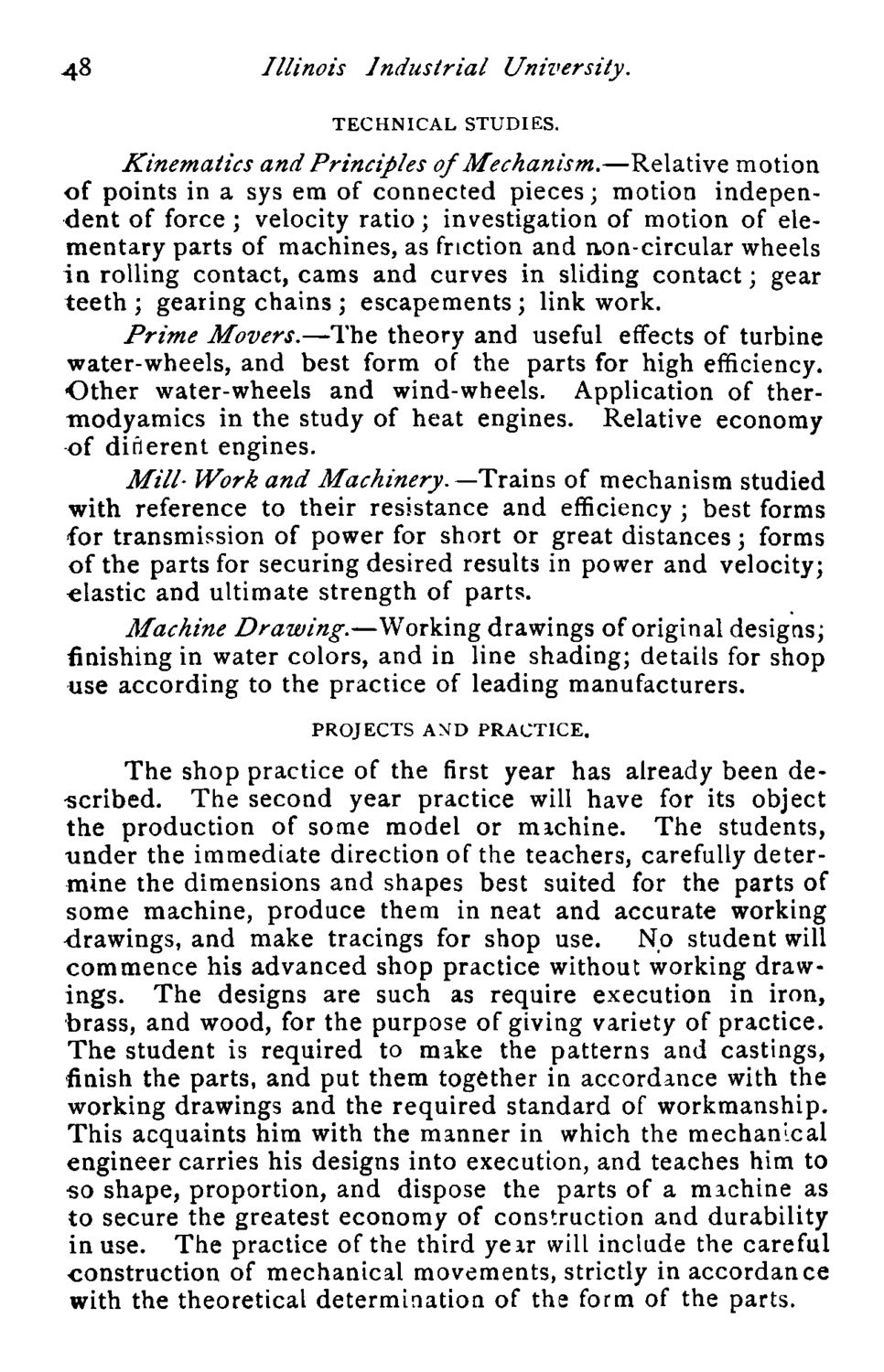| |
| |
Caption: Course Catalog - 1884-1885
This is a reduced-resolution page image for fast online browsing.

EXTRACTED TEXT FROM PAGE:
48 Illinois Industrial University. TECHNICAL STUDIES. Kinematics and Principles of Mechanism.—Relative motion of points in a sys era of connected pieces; motion independent of force ; velocity ratio; investigation of motion of elementary parts of machines, as friction and non-circular wheels in rolling contact, cams and curves in sliding contact; gear teeth; gearing chains ; escapements; link work. Prime Movers.—The theory and useful effects of turbine water-wheels, and best form of the parts for high efficiency. Other water-wheels and wind-wheels. Application of thertnodyamics in the study of heat engines. Relative economy of dinerent engines. Mill- Work and Machinery.—Trains of mechanism studied with reference to their resistance and efficiency ; best forms for transmission of power for short or great distances; forms of the parts for securing desired results in power and velocity; •elastic and ultimate strength of parts. Machine Drawing.—Working drawings of original designs; finishing in water colors, and in line shading; details for shop use according to the practice of leading manufacturers. PROJECTS AND PRACTICE. The shop practice of the first year has already been de•scribed. The second year practice will have for its object the production of some model or michine. The students, under the immediate direction of the teachers, carefully determine the dimensions and shapes best suited for the parts of some machine, produce them in neat and accurate working drawings, and make tracings for shop use. No student will commence his advanced shop practice without working drawings. The designs are such as require execution in iron, brass, and wood, for the purpose of giving variety of practice. The student is required to make the patterns and castings, finish the parts, and put them together in accordance with the working drawings and the required standard of workmanship. This acquaints him with the manner in which the mechanical engineer carries his designs into execution, and teaches him to so shape, proportion, and dispose the parts of a machine as to secure the greatest economy of construction and durability in use. The practice of the third yeir will include the careful construction of mechanical movements, strictly in accordance with the theoretical determination of the form of the parts.
| |